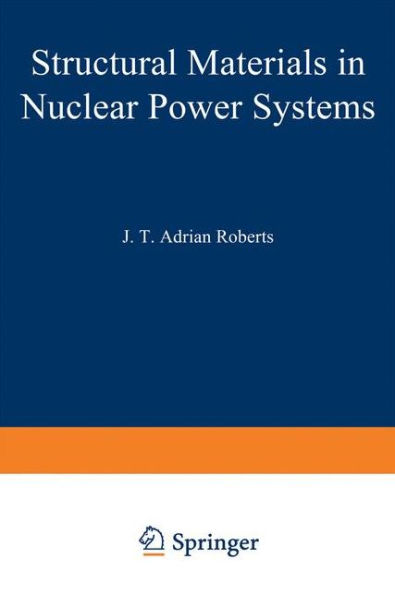Structural Materials in Nuclear Power Systems
In recent years the effort devoted to assuring both the safety and reliability of commercial nuclear fission power reactors has markedly increased. The incentives for performing this work are large since the resulting im provement in plant productivity translates into lower fuel costs and, more importantly, reduced reliance on imported oil. Reliability and availability of nuclear power plants, whether fission or fusion, demand that more attention be focused on the behavior of materials. Recent experiences with fission power indicate that the basic properties of materials, which categorize their reliable behavior under specified conditions, need reinforcement to assure trouble-free operation for the expected service life. The pursuit of additional information con tinues to demand a better understanding of some of the observed anom alous behavior, and of the margin of resistance of materials to unpre dictable service conditions. It is also apparent that, next to plasma heating and confinement, materials selection represents the most serious chal lenge to the introduction of fusion power. The recognition of the importance of materials performance to nu clear plant performance has sustained a multimillion dollar worldwide research and development effort that has yielded significant results, both in quantification of the performance limits of materials in current use and the development and qualification of new materials. Most of this information appears in the open literature in the form of research reports, journal articles, and conference proceedings.
1000844804
Structural Materials in Nuclear Power Systems
In recent years the effort devoted to assuring both the safety and reliability of commercial nuclear fission power reactors has markedly increased. The incentives for performing this work are large since the resulting im provement in plant productivity translates into lower fuel costs and, more importantly, reduced reliance on imported oil. Reliability and availability of nuclear power plants, whether fission or fusion, demand that more attention be focused on the behavior of materials. Recent experiences with fission power indicate that the basic properties of materials, which categorize their reliable behavior under specified conditions, need reinforcement to assure trouble-free operation for the expected service life. The pursuit of additional information con tinues to demand a better understanding of some of the observed anom alous behavior, and of the margin of resistance of materials to unpre dictable service conditions. It is also apparent that, next to plasma heating and confinement, materials selection represents the most serious chal lenge to the introduction of fusion power. The recognition of the importance of materials performance to nu clear plant performance has sustained a multimillion dollar worldwide research and development effort that has yielded significant results, both in quantification of the performance limits of materials in current use and the development and qualification of new materials. Most of this information appears in the open literature in the form of research reports, journal articles, and conference proceedings.
109.99
In Stock
5
1

Structural Materials in Nuclear Power Systems
485
Structural Materials in Nuclear Power Systems
485Paperback(Softcover reprint of the original 1st ed. 1981)
$109.99
109.99
In Stock

Product Details
| ISBN-13: | 9781468471960 |
|---|---|
| Publisher: | Springer US |
| Publication date: | 11/25/2012 |
| Series: | Modern Analytical Chemistry |
| Edition description: | Softcover reprint of the original 1st ed. 1981 |
| Pages: | 485 |
| Product dimensions: | 5.98(w) x 9.02(h) x 0.04(d) |
From the B&N Reads Blog
